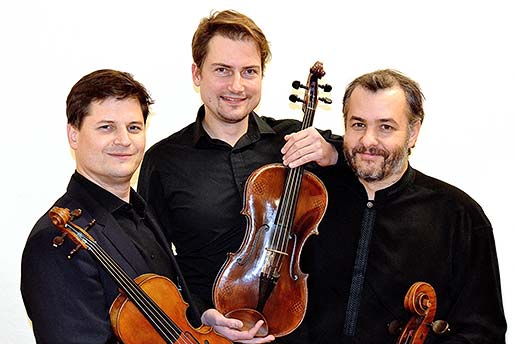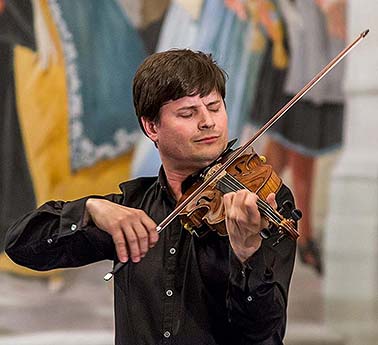Hans Krása (1899–1944) hailed from a background influenced by the Czech, German and Jewish cultures that thrived in Prague at the time. His father was Czech, his mother was German. For now, it is not known for certain where he received his musical training (and whether he was educated in this respect at all) – Krása allegedly attended the Prague Conservatory, yet he is not listed in its records. Nor is his name to be found in the 1920 roll of students of the open German Music Academy. In 1921, a composition of his was first played in public, with Alexander Zemlinsky conducting a performance of Krása’s Orchesterlieder, set to Christian Morgenstern’s text, at the New German Theatre in Prague. In 1933, the same theatre hosted the premiere of his opera Verlobung im Traum (Betrothal in a Dream), based on F. M. Dostoyevsky’s novel Uncle’s Dream. Shortly before the outbreak of WWII, Krása wrote his children’s opera Brundibár, which he would re-instrument while at Theresienstadt and which was then performed by the imprisoned children. The Dance for string trio, composed in the summer of 1944, and the Passacaglia and Fugue, dating from 7 August of that year, were premiered at Theresienstadt by Karel Fröhlich, Heinrich Taussig and Friedrich Mark, members of the Theresienstadt Quartet. Taussig was murdered at Auschwitz, the cellist “Freddy” Mark died in March 1943 at Dachau. Fröhlich was the only one of them to have survived the Holocaust – after the war, he moved to the US, where he died in 1994. The waltz-like, burlesque atmosphere of the Dance reveals that Krása was inspired by Gustav Mahler’s music, which was regularly performed in Prague between the two world wars. The chromatic material of the Passacaglia and Fugue shows Krása’s penchant for Arnold Schönberg and his Viennese’s circle of artists.
Gideon Klein (1919–1945), a superb pianist (a pupil of Vilém Kurz) and an extraordinarily gifted student of musicology at Charles University in Prague, had ahead a promising career, which was cut short due to the Nazi Race Laws that excluded him from the public cultural life. An autodidact, his compositional talent was thus initially only known to his friends and family. In December 1941, Klein was imprisoned at the Theresienstadt camp, where he gave piano performances and wrote music. The String Trio was most likely the last work he completed, on 7 October 1944, nine days prior to his being transported to Auschwitz. Later on, he was moved to Fürstengrube near Katowice. Miraculously, the compositions Klein left behind at Theresienstadt have been preserved. In January 1945, when the Nazis were retreating before the approaching Red Army, he died during the dissolution of the Fürstengrube labour camp. The String Trio is linked with the folk tradition of Klein’s native Moravia, as it was embraced by the young generation of artists inspired by the composers Vítězslav Novák, Leoš Janáček and Alois Hába, yet it was evidently also written in tribute to his lost homeland. In the first movement, the folk element is primarily palpable in the rhythm. The second movement is made up of eight variations on a Moravian song, while the final movement is again rhythm-based and, notwithstanding Klein’s tragic situation, harbours humour.
The Goldberg-Variationen (Goldberg Variations), a renowned work for harpsichord by the celebrated late-Baroque master Johann Sebastian Bach (1685–1750), was published in 1741. Its title has been used since the 19th century on the basis of an anecdote told to the biographer Johann Nikolaus Forkel by Bach’s sons. According to the tale, the composition was instigated by Count Hermann Carl von Keyserling, the former Russian Ambassador to the electoral court in Dresden, who allegedly suffered from insomnia, hence the harpsichordist Johann Gottlieb Goldberg had to play music for him during his sleepless nights. Yet at the time when Bach wrote the piece Goldberg (born in 1727) was a boy and, what is more, the title page of the score does not contain a dedication, which makes the story of the commission unlikely. The Goldberg-Variationen is a masterpiece of the art of counterpoint variation. In the 30 Variations on the introductory Aria, which recurs at the end, Bach splendidly brought to bear a variety of the technical and stylistic feasibilities of the keyboard instruments of his time. The Russian violinist and conductor Dimitry Sitkovetsky decided to arrange the Goldberg-Variationen for string trio in 1984. Decades later, in 2005, he revised his adaptation, which has ever since been performed by a number of chamber ensembles all over the world.
Franz Schubert (1797–1828) embarked upon composing a piece in B flat major scored for string trio three times. The first attempt, made in 1814, has been lost, yet we can assume that its first movement’s material was used for a quartet in the same key. In 1816, Schubert got down to his second String Trio in B major (D 417), but he merely finished the first movement and 39 bars of the second movement. In 1817, he composed a complete four-movement string trio (in B flat major, D 581). The pieces bear witness to Schubert’s striving to master the structure of the form that steadied in the period of the Viennese Classicism. Echoes of Haydn and Mozart in the allegro movement of the String Trio in B flat major, D 417, are clearly audible – according to some musicologists, the “imitative” nature of the work might have even been the reason why Schubert abandoned it. The trio’s fragment has thus remained a gracious chamber miniature.
Ludwig van Beethoven (1770–1827) wrote the three String Trios, Op. 9, in 1798 for his patron Count Johann Georg von Browne-Camus, a diplomat representing the Russian Empire in Austria. They are among the first works demonstrating his singular approach to music. The energetic, highly passionate String Trio in C minor indicates Beethoven’s future development towards symphonic mastery. At the time of publication, the composer regarded the three pieces as his best works so far. The first movement of the String Trio in C minor is built on a repeating four-tone motif. The secondary theme starts in major, yet it is soon replaced with a minor key, with the dynamic effects and sharp contrasts in rhythm providing momentum and evoking unrest. The slow movement brings up further tension, heightened as a result of alternating modes. Owing to its pertinacious rhythm and piercing accents, the Scherzo has been identified as a macabre dance, while a simple melody in the middle section suggests tranquilisation and relaxation. The Finale comes across as an excited conversation between all the three instruments, with the coda fading away “as though shrugging off all that which preceded”.
Vlasta Reittererová

